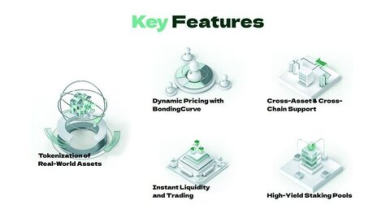The Impact of RWA Cross-Chain Issuance on Ethereum’s Institutional Adoption Position: Is ETH Truly Indispensable?
Frax Finance Founder Sam Kazemian Questions Ethereum’s Dominance in Stablecoin and RWA Issuance
Frax Finance founder Sam Kazemian recently raised concerns on the X platform regarding Ethereum’s leading position in the issuance of stablecoins and tokenization of real-world assets (RWA). He pointed out that when assets are natively issued across chains, Ethereum’s “settlement guarantee” loses its significance, and he called on the community to address the challenges posed by institutional adoption and real-world implications.
Loss of Dominance in Stablecoins and RWA: Is Ethereum’s Settlement Guarantee Necessary?
Kazemian stated that with the rapid rise of RWAs and regulated stablecoins, the importance of whether an asset is issued or settled on Ethereum’s mainnet (ETH L1) is diminishing.
1/ With RWAs & regulated stablecoins one of the fastest growing sectors in crypto, does it actually matter if a stablecoin/RWA is issued or settled on Ethereum? I don’t think it does once the asset is issued natively anywhere else but on ETH L1. Let me explain why — sam.frax (@samkazemian) March 29, 2025
He cited the tokenized U.S. Treasury fund BUIDL launched by BlackRock and Securitize, which has been issued simultaneously on Ethereum, Arbitrum, and Solana, demonstrating that multi-chain deployment of RWAs has become the new norm: “This is certainly beneficial for BlackRock, but it could be a zero-sum game for Ethereum’s vision as the ‘institutional issuance main chain.’”
He further noted that for assets without an issuer (such as BTC), Ethereum’s settlement guarantee still holds value; however, for RWAs with responsible entities, the key to fulfilling obligations lies with the issuer, not the blockchain’s verification mechanism. Thus, the necessity of choosing Ethereum varies from person to person.
Is Institutional Trust in Ethereum a Myth? Kazemian Points to Systemic Flaws
Kazemian pointed out that if tokenized liabilities are directly and natively issued on L2, rather than extending from Ethereum’s mainnet, these assets would lose the security and trust backing of Ethereum, thereby diminishing the network’s necessity. He used Frax’s institutional stablecoin $frxUSD as an example, which exists natively on chains such as Fraxtal and Solana, independent of Ethereum’s mainnet assurances.
He also criticized the current community’s trust in Ethereum as being overly dispersed: “Ethereum supporters should have a strong territorial mentality regarding the issuance of RWAs, similar to Bitcoin maximalists’ attitude towards BTC. Otherwise, the ‘settlement guarantee’ characteristic of ETH will ultimately become meaningless in the RWA realm. If RWAs are natively issued across multiple chains, it doesn’t matter where they are settled.”
Possible Solution? Issuance Alignment Attempts to Rebuild Mainnet Value
Regarding solutions, Kazemian proposed the concept of “issuance alignment.” He suggested establishing legally prioritized “senior class liabilities” on Ethereum’s mainnet, which would only allow issuance on the mainnet and ensure priority redemption, while daily trading assets could retain cross-chain flexibility, aiming to restore Ethereum’s leading position in legal and trust tiers: “If we want to strengthen Ethereum’s position in institutional asset issuance, we should ensure that the most important, legally prioritized redeemable assets can only be issued on Ethereum’s mainnet.”
Can Ethereum Maintain Its Position as the Institutional Main Chain? Community Consensus and Technological Innovation Are Needed
Sam Kazemian’s questions reveal potential structural risks for Ethereum in the new financial era. Once issuers become the main entities for cross-chain asset fulfillment, Ethereum may lose its long-term competitive advantage if it does not clearly define its role. Currently, “senior class liabilities” may serve as a starting point for rebuilding its uniqueness, but whether it can balance multi-chain flexibility with mainnet authenticity still depends on the collective efforts and experiments of the entire community.
Risk Warning
Investing in cryptocurrencies involves high risks, and their prices can be highly volatile. You may lose all your principal. Please assess risks carefully.

